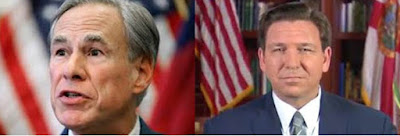It sounds incredible. In their effort to protect the safety of
crime victims and police officers, the
Dallas Police Department recently initiated a policy to block public access to
crime data – a decision that was approved by Chief of Police Eddie Garcia and under
review by the Dallas City Council. [1]
It is difficult to understand how this decision helps to build public confidence
in policing at a time when trust in law enforcement has been in serious decline. Indeed, who benefits by this lack of
transparency and accountability? Chief
Garcia explains that Dallas is following a similar practice as other U.S.
cities in redacting crime data; however, some of these cities face pending
lawsuits for blocking public access to crime data. In Texas, the Texas Public Information Act
requires that basic information about an arrested person, arrest or crime may
not be withheld from the public.
The Dallas access policy has angered
many stakeholders that rely on easy access to crime data, especially some news
organizations that are consulting attorneys to evaluate the legality of the
policy. The concern by journalists was underscored in a recent statement by Dallas
Morning News Executive Director Katrice Hardy:
“Our role
as a news organization is to seek information to help our community stay
informed. The public has a right to know
and understand how safe their community is,” Hardy said “This change limits
access to critical information that keeps us informed about the welfare of our
community. Where crimes occur and who is
impacted is basic information. This is
the opposite of transparency and has far-reaching implications.” [2]
Common sense tells us that public
access to crime data is essential for many reasons. For example, how would criminologists develop
models of crime prevention without access to crime data? How would crime fighting tools and policing
resources be allocated without the guidance of crime data? Indeed, knowing the types of crimes that are
committed, the victims of crime and the locations where crimes are committed forms
the very foundation for crime prevention programs.
Faced with increased scrutiny by the
public and legislators, the law enforcement community has increasingly opted to
hide, delay or distort crime data. For
example, many police departments throughout the U.S. have been under-reporting
hate crimes [3] as
perhaps one way to protect the image of their city. On a voluntary basis, police departments are
expected to submit crime reports to the Federal Bureau of Investigation which are
made accessible to the public on the Uniform Crime Reports web site;
unfortunately, many police departments do not submit crime data to the FBI
portal. [4]
By blocking access to crime data,
researchers and the public who want to fact check news reports about crime
trends in their communities will be unable to do so. These practices undermine public safety by
preventing residents from monitoring crime activity and trends in their
communities.
When crime data is distorted or
falsified, it also does great harm to the economic development of a community. Retailers,
for example, often avoid doing business in predominantly Black or Latino
communities due to reports or perceptions of high crime rates. To challenge
this practice, a team of investigators recently conducted a study of food
deserts in a predominantly Black community in Dallas, Texas [5]
and analyzed police department crime files to fact check perceptions of high
crime rates frequently reported by the media. Using geospatial analysis, the
research team found that crime patterns were not much higher in the food desert
communities when compared to the non-food desert communities, and that several
food deserts showed promising economic potential for a mainstream supermarket. It was particularly disturbing, however, to
find that a team of academic researchers had reported inflated crimes rates in
this community [6]
without presenting verifiable evidence.
Without access to original crime data from the Dallas Police Department,
however, this type of fact checking would not have been possible.
News organizations should be commended for taking the bold step to legally challenge these policies. But news organizations will need more support to reinforce their advocacy from a broad spectrum of stakeholders who depend on the timely and accurate release of crime data, including research organizations, non-profits focused on crime prevention, chambers of commerce, and the general public.
Reference Notes
[1] Smith, K. (2021, November). Dallas deletes information
about crime from public view, plans more redactions and delays. Dallas Morning
News, Accessed at:
[2] Ibid.
[3] Pezzella, F.S, Fetzer, M.D. and Keller, T. (2019,
January). The dark figure of hate crime under-reporting. American Behavioral
Scientist. Accessed at: https://journals.sagepub.com/doi/abs/10.1177/0002764218823844?journalCode=absb
[4] Uniform Crime Reports. Accessed at: https://www.fbi.gov/services/cjis/ucr
[5] Rincon, E.T. and Tiwari, C. (2020 March). Demand
metric for supermarket site selection: A case study. Papers in Applied
Geography. https://www.tandfonline.com/doi/full/10.1080/23754931.2020.1712555
[6] Crowe, J., C. Lacy, and Y. Columbus (2019). Barriers
to food security and community stress in an urban food desert. Urban Science 2
(2):46







